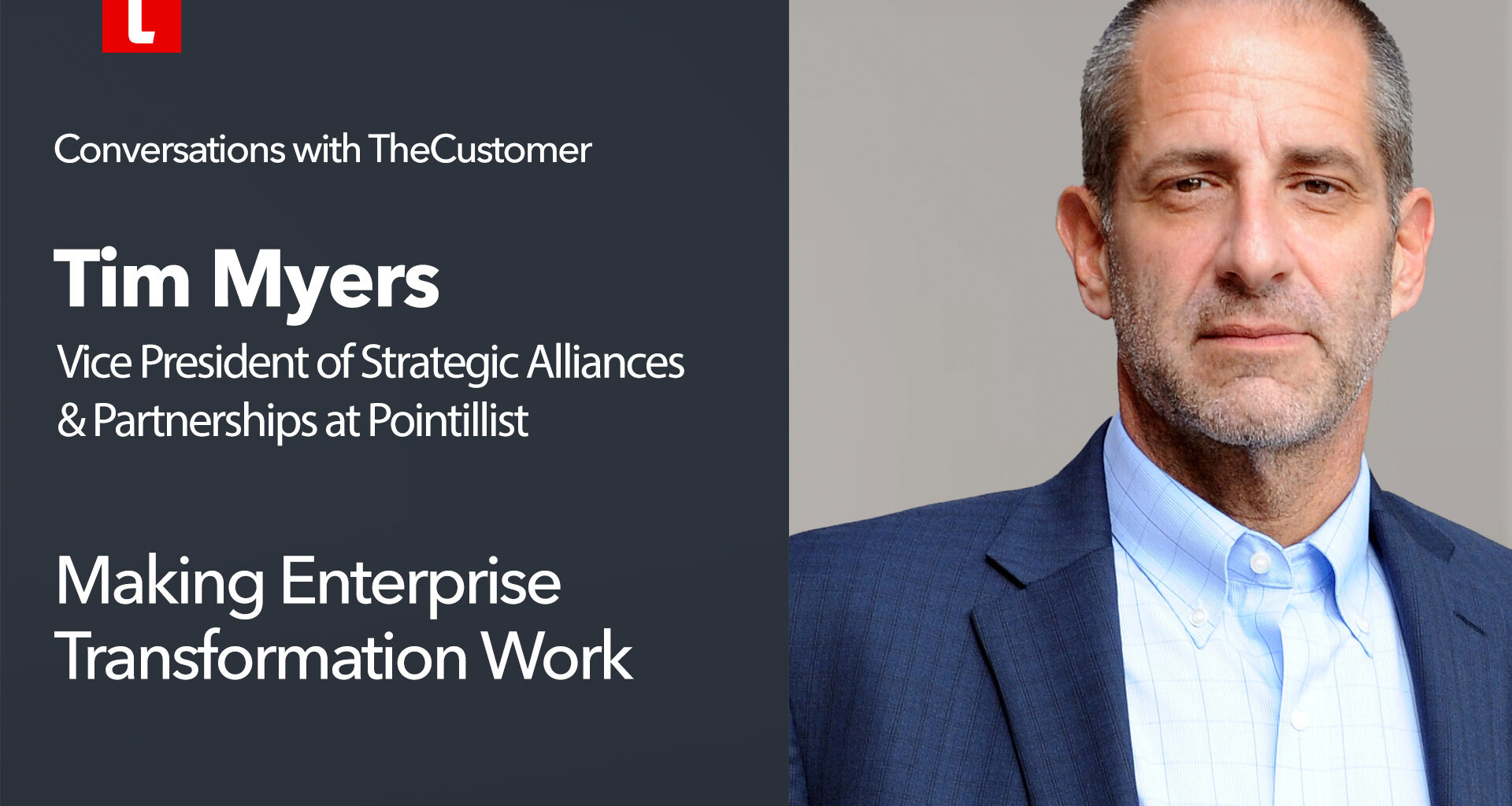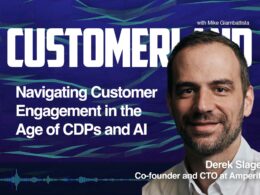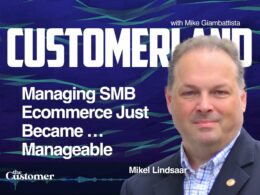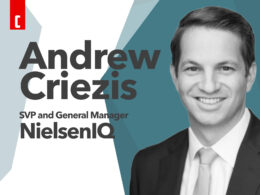Rafer Weigel sat down recently with Tim Myers to discuss Myers’ recent article in TheCustomer to bring some context to a problem that, admit it or not, is virtually universal in large organizations. Tim has a long history of “fixing” broken processes, systems – even entire companies and brings both perspective and insight into the understanding of, the goal-setting for, and the implementation of large enterprise transformation initiatives.
For such a daunting topic, you’ll be surprised at how fast this conversation moves. Tip of the hat to both Tim and Rafer for shedding some much needed light on the matter. (For your convenience, we’ve posted a full transcript of the conversation below.)
TRANSCRIPT
Rafer Weigel
Chances are your company is being tasked to go through some kind of change right now, but is it agile enough to go through a transformation? What are the identifiers that you should be looking at? Well, the answer to those questions, consultant, Tim Myers is here. He’s a regular contributor to the customer.
His latest article is entitled. Don’t leave your enterprise transformation to chance, and we’re here to take a deeper dive with him on that. Tim. Thanks for joining me.
Tim Myers
Thanks for having me.
Rafer Weigel
So, Tim, you write a lot of great pieces, uh, but focusing on this one, why do you think so many companies are averse to change?
Tim Myers
So, thanks for that question. I don’t think they’re adverse to change. I think that whether it’s executives or middle tier managers, companies believe they’re actually good at change. The reality of it is that they fall short, not because of their desire to get there, but they’re actual ability to get there.
And, and some of the things I touched on in the article, things like “are you aligned in a way where you’re incenting employees to actually change?” And the answer is almost always no. Right. So if we, we pull the thread on that particular question, which is – if a company wants to become customer centric, for example, which is, uh, is pretty prominent these days, they want to respond to customer’s demands in this kind of omni-channel space – their ability to change into that company is hindered by the fact that they’re still paying their employees on different metrics. Right?
So, if you want to be a customer centric company, you should pay your employees around metrics that drive customer centricity, not around metrics that drive product centricity, which is the traditional model.
Rafer Weigel
And you talk about how companies are switching their paradigm from an inside out model to more of an outside in model. And you kind of touched a little bit on it just then, can you expound on that a little bit more?
Tim Myers
Companies are feeling commoditized, right? In digital (enterprise) transformation, the transformation, which is driving digital sales or digital service through mobile and the web are, are really taking away what differentiated customers, when service was more physically based. Right? So, the fact that they’re being commoditized and it’s easier for a company that is tiny to actually provide better customer service than a company that’s large, uh, is, is driving these changes.
Rafer Weigel
One of your earlier articles, you talk about identifying the problem, the fire drill versus, you know, actually making wholesale changes and getting to the root of the problem. Why do you think so many companies have a difficult time actually identifying the problem at first in order to make that transformation?
Tim Myers
Yeah. It’s really a skill. The idea of understanding the root cause of something or understanding what problem you’re solving before you go, you set out to address it is, is first and foremost, a skill that I think a lot of executives, a lot of middle tier – and actually anybody up and down the ranks of a corporation really don’t have great skills at doing that.
And you can also see that people are incented to do things quickly, which kind of takes away from the idea that I’m going to slow down to go faster or really dissect what’s going on here so that I can solve the problem correctly in the first place. And that understanding is, or that skill is an analytical skill.
So how do I analyze the situation to understand what the problem is? And, and those analytical skills are just not something that people either develop (because) they’re certainly not something that’s taught in school colleges or whatever. Right. It’s something that, if you’ve got that skill, you’ve recognized it independently and you’ve developed it on your own.
Rafer Weigel
You also talk about the need for C-suite level engagement on something like this. A lot of companies in my personal experiences, the need for change was, was obvious, but it was tasked on the rank and file to it engineer that change. But you’re saying, no, it’s got to go. It’s got to start with the CEO.
Tim Myers
It does. And the primary reason for that is that a large degree of the people that are involved in change don’t actually have either political power or the actual ability to make the change occur that they’re being asked to drive. And if the C-suite, if the CEO and the COO and the CFO, aren’t all saying, do what, you know, the head of this transformation is telling you to do, people are not going to do it.
And I have been in organizations where people are so entrenched in the way that they do things or the way that they’ve done things, the ability to be able to adapt to this new way is, is very difficult because they don’t get the reassurance from the C-suite that they’re doing the right thing in making these really fundamental changes to the way business processes operate in order to achieve a transformation.
It’s a lot to ask of people. And if the C-suite isn’t saying “we’ve got your back, people”, they’re just not going to sign up for it because it feels too risky and scary to them. They don’t want to be caught holding the bag if you will, and be caught in that risky situation.
Rafer Weigel
And then also you talk about the challenge of, for a larger company, being able to sell that change to investors, obviously with the smaller companies, they can afford to be a little bit more nimble, but you know, the challenge with the investors.
Can you talk about some of the barriers and obstacles that that might create for a larger company and how do they navigate that?
Tim Myers
Sure. And again, let’s, let’s stick to customer centric change. Although I digital transformation, right? If we rewind 28 years or even more recent, uh, blockchain transformation, right?
Any one of those things is going to disrupt the primary metrics that you’re using to show success of your company. And if, if your investors, your private equity firm, your wall street, if they’re not on board with that, if they don’t understand that that change is coming, they’ll continue to look at older metrics and think that something’s wrong.
And I’ll make this up, right? If the idea is I want to have more profitable customers, but it’s okay to have less of them, but I’ve been an organization that’s been really driving metrics of customer growth. If wall street sees a drop in customer growth and they’re not really looking towards the story of, but each customer is throwing off more margin or more revenue, then they’re going to worry and, and you’ll get hit hard for that.
So you really need to be able to manage everybody’s understanding of what it is you’re trying to do. Right. So what does success look like? And you have to manage that up as a C-suite and you have to manage that down. It really falls in their lap, right? The C-suite owns this because a transformation is by definition, a massive change to an organization and you can’t delegate out. You can’t be a lazy C-suite and, and hope that somebody else is going to pick it up because it will fail. It does every time.
So how do you sell that, uh, to the top? Do you have to envision what the change is going to look like? I mean, if you’re making a change, you’re going into uncharted territory. Right. So how can you give them that carrot at the end of the stick? I think that the answer to that is that there are very few places where the territory is that uncharted, from an operations perspective.
And what you do is you, you communicate your risk mitigation plan, right? So one of the things I mentioned in that last article is the idea that you really need to understand what the risks are. Uh, and you need to put that together up front so that you can mitigate those risks as you’re reaching towards your future state, whatever that happens to be.
And most transformations, you’re not the first one doing it, right. If you’re now digitally transforming, which still people are talking about, there’s plenty of examples that you’re, you’re really behind the curve, right? If you were the first one then it was more difficult. And the best way to really do that is to kind of crawl, walk, run into it.
Which means that don’t throw out your old business. Find a way to, to start the transformation without throwing out your old business model, separating, running separately. Those types of things are all ways to address that risk model, to make sure that you’re not finding yourself in a difficult situation.
Rafer Weigel
In your experience as a consultant, have you found companies are receptive to going through these transformations or have they been reticent?
Tim Myers
Well, everybody is receptive to going through them. The fact is, is that I find that most of them, not most of them, a large degree of them fail. And what I mean by that is, people externally and “big X corporation” only see successful transformations. They don’t see the ones that people have tried and have failed. Right. And there’s a lot of those. And, and by the way, internal transformations have a high degree of probability of being successful. So, like one in eight, one in 10, right versus a startup trying to do something new. It’s like one in 500. So, you’ve got a much higher possibility of being successful. Again, there are failures all over the place for the reasons that I mentioned in the article – everything from organizational structure to compensation, to the problem, definition, to all of those things that prevent things from being successful and those other, those seven out of eight that fail or because of those issues that people don’t address up front because they don’t understand what a transformation truly is and what it takes.
Rafer Weigel
Do you find that, uh, there’s any success in those failures? I think a lot of people are afraid of failure and that’s why there is some hesitancy to change. But is there any merit in, in taking a shot and falling short?
Tim Myers
I couldn’t be a bigger proponent of learning through failure. Like, the only risk is risk not taken. And
If you do postmortems, if you learn from your failures, you’re going to be a better, stronger company. The key is, is that lots of folks don’t do that. People aren’t rewarded for taking a risk and failing and trying to figure out how to do something. It’s a stigma still, and that’s pretty evident in a lot of the organizations I consult in.
And it would require some accountability as opposed to some finger pointing. It sounds like. Well, and, and if you go back to the earlier comment about the C-suite, if the C-suite owns it and it fails, then the C-suite owns the failure and that’s where the buck stops. Right. And that has to be the case. Is that because then the risk of failure and the risk of somebody’s career being, um, uh, prematurely cut short is diminished significantly when the CEO is right there with you or the COO or the CFO, right? Because the we’re all in this together, uh, is the right way to push transformations through an organization, as I said earlier.
Rafer Weigel
So Tim, you give a lot of insight into this topic. Where does that insight come from?
Tim Myers
Yeah, I’ve been super – grateful and lucky to be an outside observer as a consultant in a lot of large corporations. And folks that are going through transformations. And a bit of my background is around fixing failed projects, entities, departments, whatever you call it.
And what I noticed in being that outside observer is that there are patterns that people don’t see. It’s this traditional “can’t see the forest for the trees”. And this outside in perspective that I’ve had allows me to see patterns, for example, people continuing to fail at solving problems. Well, why did they do that? Because they don’t know what problem they’re solving.
That was so evident to me because I’m looking at it and going, why is this failing when internally they’re just concentrating on the fact that it’s failing. Right? So a lot of the things that I talk about in my articles and in my next one is actually going to be around the idea of how patterns of behavior are things to really keep an eye out for, in an enterprise transformations – because that’s how you’re going to be successful.
Look for those patterns, they’re all over the place. And with those patterns, you can not only see the insight that we’d been talking about today. Uh, but, but other ones as well, that’ll help you be successful.
Rafer Weigel
Tim Myers -it’s really interesting stuff. I look forward to your next article. Thanks for talking to me.
Tim Myers
Thanks for having me. I appreciate it.
Rafer Weigel is Editor at Large for TheCustomer. Tim Myers is Vice President of Strategic Alliances & Partnerships at Pointillist.













